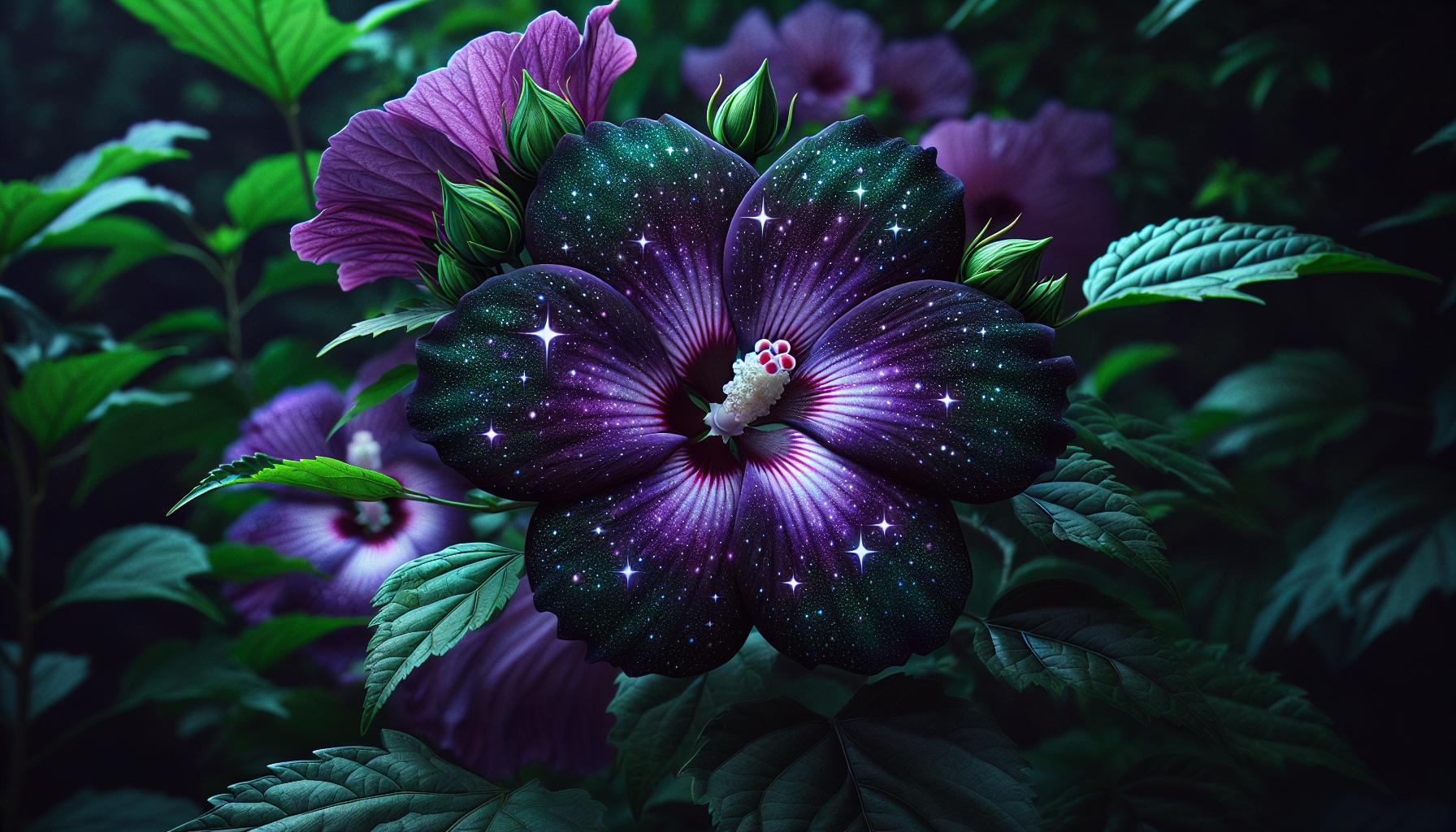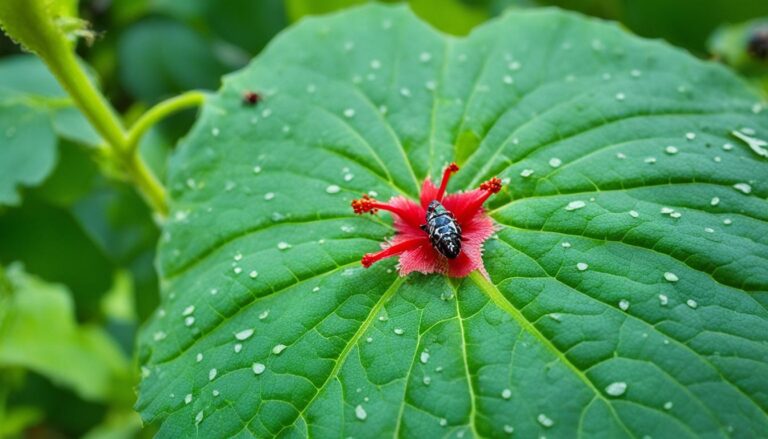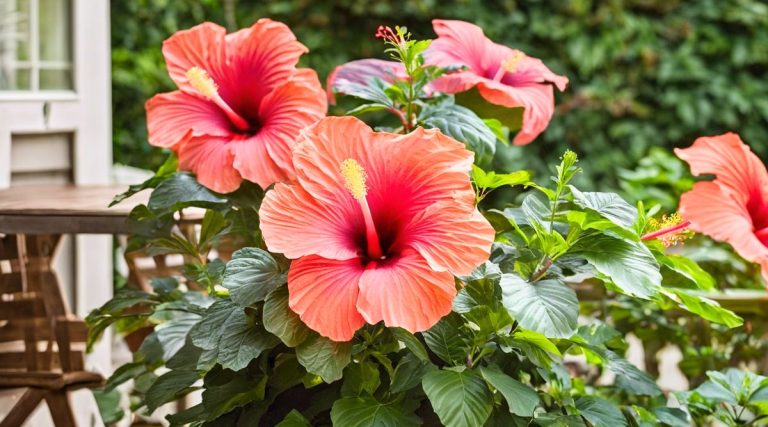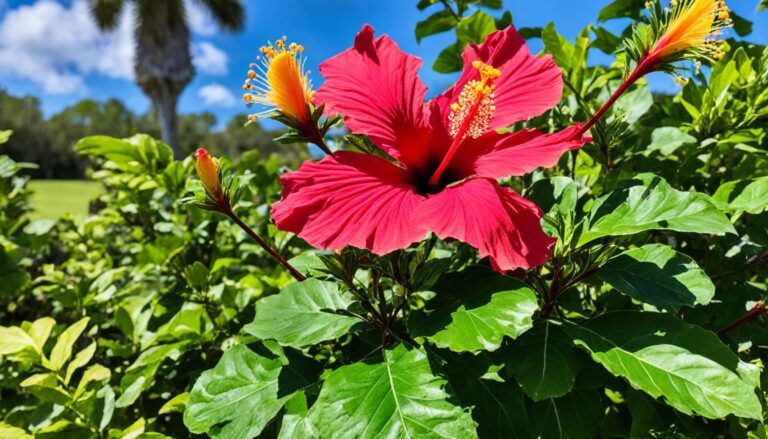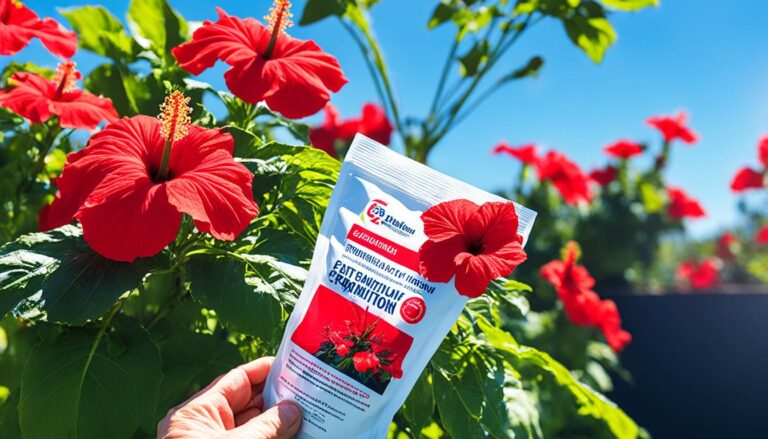Starry Starry Night Hibiscus: Growing Tips for This Celestial Beauty
As I gaze upon the Starry Starry Night Hibiscus, I’m captivated by its ethereal beauty. This stunning variety of hibiscus boasts deep purple flowers adorned with a constellation of white speckles, reminiscent of a starlit sky. It’s no wonder this plant has become a favorite among gardeners and flower enthusiasts alike.
But what makes the Starry Starry Night Hibiscus so special? Is it just its unique appearance, or are there other qualities that set it apart? In this article, I’ll explore the origins, care requirements, and fascinating features of this mesmerizing plant. Whether you’re a seasoned gardener or simply curious about this celestial-inspired bloom, you’ll discover why the Starry Starry Night Hibiscus deserves a place in your garden or home.
What Is Starry Starry Night Hibiscus?
Starry Starry Night Hibiscus is a stunning tropical perennial known for its deep purple flowers adorned with white speckles. This eye-catching variety stands out among other hibiscus plants due to its unique coloration and captivating appearance.
Origin and Characteristics
Starry Starry Night Hibiscus is a cultivar of Hibiscus rosa-sinensis, originating from Southeast Asia. It’s a compact shrub that typically grows 4-6 feet tall and 3-4 feet wide. The plant boasts glossy, dark green leaves that provide a perfect backdrop for its striking blooms.
Key characteristics:
- Height: 4-6 feet
- Width: 3-4 feet
- Bloom size: 6-8 inches in diameter
- Foliage: Dark green, glossy leaves
- USDA Hardiness Zones: 9-11
Unique Features
The Starry Starry Night Hibiscus sets itself apart with its distinctive floral display:
- Color pattern: Deep purple petals speckled with white
- Bloom shape: Large, trumpet-shaped flowers
- Petal texture: Velvety smooth
- Stamens: Prominent, bright yellow stamens that contrast beautifully with the dark petals
This hibiscus variety blooms throughout the growing season, producing flowers that last only a day but are quickly replaced by new buds. The plant’s ability to produce a continuous display of these celestial-inspired blooms makes it a favorite among gardeners seeking a touch of nighttime magic in their landscapes.
Growing Starry Starry Night Hibiscus
Starry Starry Night Hibiscus thrives with proper care and optimal growing conditions. This tropical beauty requires specific attention to climate, planting, and maintenance for its celestial blooms to shine.
Ideal Climate and Conditions
Starry Starry Night Hibiscus flourishes in warm, humid environments. It’s best suited for USDA hardiness zones 9-11, where temperatures rarely dip below 50°F (10°C). This hibiscus variety prefers:
- Full sun to partial shade
- Well-draining, slightly acidic soil (pH 6.0-6.5)
- High humidity levels (60-70%)
- Protection from strong winds
In cooler climates, I’ve found success growing it in containers, bringing it indoors during winter. Ensure adequate air circulation to prevent fungal issues common in humid conditions.
Planting and Care Tips
Planting and maintaining Starry Starry Night Hibiscus involves several key steps:
- Planting:
- Choose a location with 6-8 hours of daily sunlight
- Dig a hole twice the size of the root ball
- Mix compost into the native soil for nutrients
- Plant at the same depth as the container
- Watering:
- Keep soil consistently moist but not waterlogged
- Water deeply 2-3 times a week in summer
- Reduce watering in winter
- Fertilizing:
- Apply balanced, water-soluble fertilizer monthly during growing season
- Use a 5-10-5 NPK ratio for optimal blooming
- Pruning:
- Trim in early spring to encourage bushy growth
- Remove dead or crossing branches
- Pinch off spent blooms to promote continuous flowering
- Pest Control:
- Monitor for aphids, whiteflies, and spider mites
- Use neem oil or insecticidal soap for organic pest management
| Care Aspect | Frequency | Notes |
|---|---|---|
| Watering | 2-3 times/week | Adjust based on rainfall |
| Fertilizing | Monthly | During growing season |
| Pruning | Annually | In early spring |
| Pest Check | Weekly | Inspect leaves and stems |
By following these guidelines, you’ll create an ideal environment for your Starry Starry Night Hibiscus to thrive and produce its stunning, galaxy-inspired blooms.
The Beauty of Starry Starry Night Hibiscus
The Starry Starry Night Hibiscus captivates with its celestial-inspired blooms. Its deep purple flowers, adorned with white speckles, create a stunning visual display that’s hard to ignore.
Stunning Blooms
The flowers of the Starry Starry Night Hibiscus are truly a sight to behold. Each bloom measures 6-8 inches in diameter, featuring:
- Deep purple petals
- Distinctive white speckles
- Prominent yellow stamens
These large, trumpet-shaped flowers open in the morning and last for a single day. But don’t worry – new buds quickly replace the spent blooms, ensuring a continuous display throughout the growing season.
The contrast between the dark petals and light speckling creates a mesmerizing effect, reminiscent of a starlit night sky. It’s this unique appearance that gives the Starry Starry Night Hibiscus its name and makes it a standout in any garden.
Landscape Impact
The Starry Starry Night Hibiscus isn’t just about pretty flowers – it’s a landscaping powerhouse. Here’s how it can transform your outdoor space:
- Focal point: Its eye-catching blooms make it an ideal centerpiece for flower beds or container gardens.
- Privacy screen: When planted in rows, these compact shrubs create a beautiful, flowering hedge.
- Tropical touch: Their lush foliage and exotic flowers bring a touch of the tropics to any garden.
In my experience, pairing this hibiscus with plants that have contrasting colors or textures enhances its visual impact. Consider planting it alongside:
- Yellow or white flowering plants for color contrast
- Fine-textured plants like ornamental grasses for textural variety
- Other tropical plants for a cohesive theme
Remember, the Starry Starry Night Hibiscus grows to about 4-5 feet tall and wide. Plan your landscape design accordingly to give it enough space to reach its full potential.
By incorporating this showstopper into your garden, you’re not just adding a plant – you’re creating a living work of art that’ll turn heads and spark conversations.
Uses in Garden Design
The Starry Starry Night Hibiscus offers versatile applications in garden design, elevating outdoor spaces with its celestial-inspired blooms. Here’s how to incorporate this stunning plant effectively:
Focal Points and Borders
Starry Starry Night Hibiscus shines as a focal point in garden layouts. Its deep purple flowers with white speckles draw the eye, creating a striking visual anchor. I’ve found placing it centrally in flower beds or at the end of pathways maximizes its impact. For borders, this hibiscus adds height and tropical flair. Plant it in groups of three or five along fence lines or property edges for a cohesive look. Its compact growth habit makes it ideal for defining spaces without overwhelming smaller gardens.
To enhance its focal power:
- Pair with lighter-colored plants for contrast
- Use uplighting to highlight its form at night
- Surround with low-growing groundcovers to emphasize its height
Container Gardening
Starry Starry Night Hibiscus thrives in containers, making it perfect for patios, balconies, and small spaces. Its manageable size and stunning blooms create instant impact in pots. Choose containers at least 18 inches wide and deep to accommodate its root system. Ensure proper drainage to prevent waterlogging.
Container planting tips:
- Use well-draining potting mix
- Place in a sunny spot with some afternoon shade
- Water regularly, especially during hot spells
- Fertilize monthly during growing season
For a tropical container garden, combine with:
- Colorful coleus
- Trailing sweet potato vine
- Upright cordyline
By using Starry Starry Night Hibiscus in these ways, you’ll create eye-catching garden designs that showcase its unique beauty and versatility.
Common Pests and Diseases
Starry Starry Night Hibiscus, like other hibiscus varieties, is susceptible to various pests and diseases. Identifying and addressing these issues promptly is crucial for maintaining the plant’s health and vibrant blooms.
Prevention and Treatment
Prevention is key in maintaining a healthy Starry Starry Night Hibiscus. Here are some effective strategies:
- Regular inspection: Check leaves, stems, and flowers weekly for signs of pests or diseases.
- Proper watering: Water at the base of the plant to avoid wetting foliage.
- Adequate spacing: Allow air circulation between plants to reduce fungal growth.
- Cleanliness: Remove fallen leaves and debris regularly to prevent pest harboring.
- Companion planting: Grow pest-repelling plants like marigolds or nasturtiums nearby.
For treatment, consider these options:
- Pests:
- Aphids: Spray with neem oil or insecticidal soap
- Spider mites: Use a strong jet of water or apply predatory mites
- Whiteflies: Hang yellow sticky traps or use insecticidal soap
- Diseases:
- Leaf spot: Remove affected leaves and apply fungicide
- Root rot: Improve drainage and reduce watering frequency
- Hibiscus chlorotic ringspot virus: Remove and destroy infected plants
| Issue | Prevention | Treatment |
|---|---|---|
| Aphids | Regular inspections | Neem oil or insecticidal soap |
| Leaf spot | Proper watering | Fungicide application |
| Root rot | Well-draining soil | Reduce watering, improve drainage |
By implementing these preventive measures and treatments, you’ll keep your Starry Starry Night Hibiscus thriving and beautiful.
Propagation Methods
Propagating Starry Starry Night Hibiscus allows gardeners to expand their collection or share this stunning plant with others. Here are two primary methods for propagation:
Seeds vs. Cuttings
Seeds:
- Slower but can produce more plants
- Germination takes 2-4 weeks
- Soak seeds in warm water for 24 hours before planting
- Plant in well-draining soil mix, 1/4 inch deep
- Keep soil moist and warm (70-80°F)
- Seedlings appear in 10-14 days
Cuttings:
- Faster, produces exact genetic copies
- Take 4-6 inch stem cuttings in spring or summer
- Remove lower leaves, leaving 2-3 at the top
- Dip cut end in rooting hormone
- Plant in a mix of peat moss and perlite
- Keep humid and warm (70-80°F)
- Roots develop in 3-4 weeks
I’ve found cuttings to be more reliable for Starry Starry Night Hibiscus, as they preserve the unique characteristics of this cultivar. Seeds may not always produce plants identical to the parent.
Step-by-Step Guide
- Prepare materials:
- Clean, sharp pruning shears
- Rooting hormone powder
- Small pots with drainage holes
- Well-draining potting mix
- Select healthy stems:
- Choose green, non-woody stems
- Look for stems with several leaves
- Avoid stems with buds or flowers
- Take cuttings:
- Cut 4-6 inches below a leaf node
- Make a clean, angled cut
- Remove lower leaves, keeping 2-3 at the top
- Apply rooting hormone:
- Dip cut end in water
- Coat with rooting hormone powder
- Tap off excess
- Plant cuttings:
- Make a hole in pre-moistened potting mix
- Insert cutting, avoiding rubbing off hormone
- Gently firm soil around cutting
- Create humidity:
- Cover pot with clear plastic bag
- Secure with rubber band
- Poke small holes for air circulation
- Provide proper care:
- Place in bright, indirect light
- Maintain soil moisture
- Keep temperature between 70-80°F
- Remove plastic once new growth appears
Ideal Conditions
Temperature:
- 70-80°F for optimal root development
- Avoid cold drafts or extreme heat
Light:
- Bright, indirect light
- Avoid direct sunlight, which can scorch cuttings
Humidity:
- 60-70% relative humidity
- Use a humidity tray or mist regularly
Soil:
- Well-draining potting mix
- Equal parts peat moss and perlite
Water:
- Keep soil consistently moist, not waterlogged
- Water when top 1 inch of soil feels dry
Fertilizer:
- Start fertilizing once new growth appears
- Use a balanced, water-soluble fertilizer at half strength
By following these guidelines, you’ll increase your chances of successfully propagating Starry Starry Night Hibiscus. Remember, patience is key – it may take several weeks to see significant growth.
Conclusion
The Starry Starry Night Hibiscus is a true gem in the world of tropical plants. Its stunning purple blooms with white speckles offer a celestial beauty that’s hard to match.
Whether you’re using it as a focal point in your garden or growing it in containers this hibiscus variety is sure to captivate. With proper care and attention to its specific needs you’ll be rewarded with a spectacular floral display.
Remember that while propagation can be a bit challenging it’s a rewarding way to expand your collection. By following the guidelines I’ve shared you’ll be well-equipped to grow and enjoy this enchanting plant in your own space.

